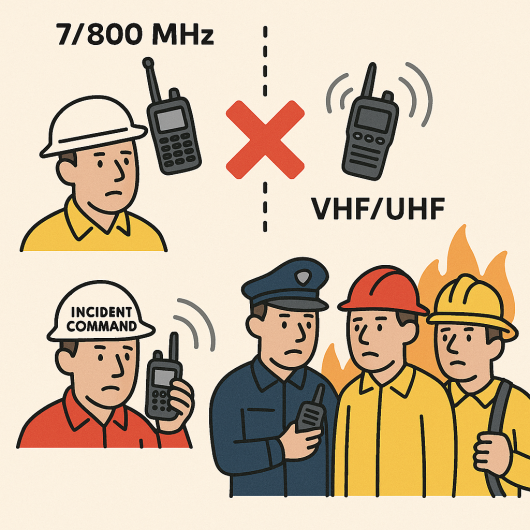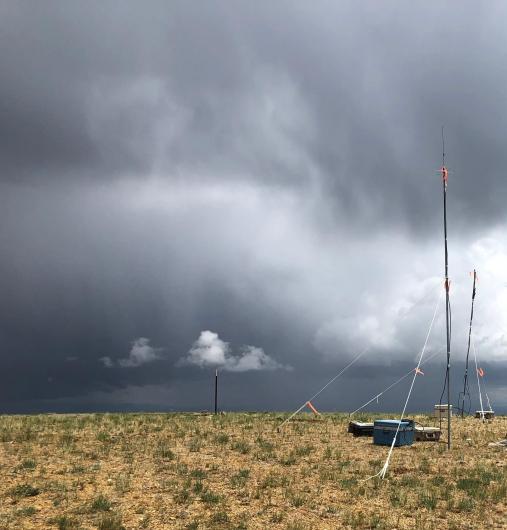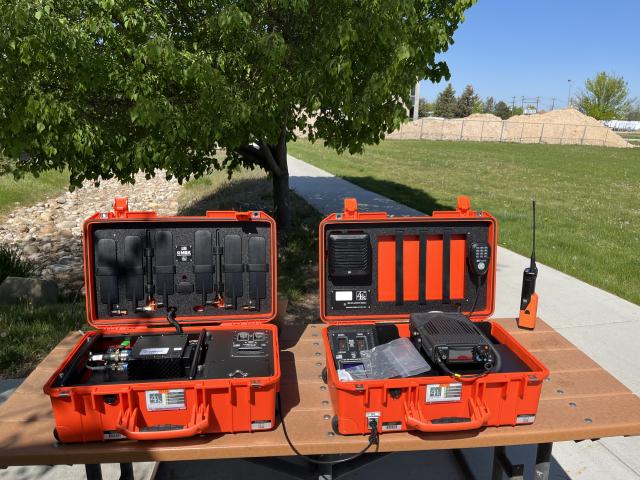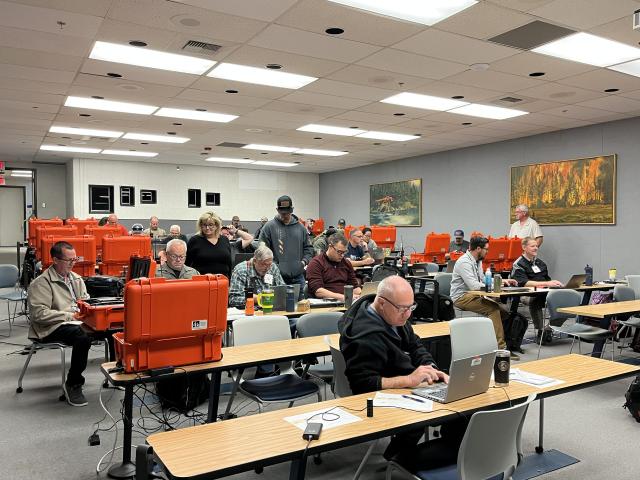BLM Fire tackles radio interoperability on wildfires
Every firefighter stepping onto a fireline for the first time learns the critical importance of Lookouts, Communications, Escape Routes, and Safety Zones, or LCES, as firefighters call it. This foundational concept woven into training and briefings is a key function to safely suppress wildfires.
Suppression operations on a wildfire can be spread across many miles, so radio communications are a crucial link in LCES. But despite its importance, maintaining clear reliable radio communications during the complexities of wildfires can be challenging.
In simple terms, a two-way radio operates by transmitting and receiving radio signals. However, different agencies and organizations often utilize equipment that operate on different frequencies.
Local fire and law enforcement agencies often utilize 7/800 MHz frequency radios for their communication needs due to several advantages, including improved coverage, higher capacity, and better building penetration. The 7/800 MHz frequency range is particularly effective in urban settings, where tall buildings and other structures can obstruct radio signals. This frequency band allows for the deployment of trunked radio systems, which efficiently manage multiple communication channels, enhancing the ability to coordinate during emergencies.
In contrast, the federal wildland fire programs primarily use VHF (Very High Frequency) and UHF (Ultra High Frequency) radios, which are suitable for long-range communication across diverse geographical areas. VHF is often favored for its capabilities over long distances, especially in rural areas, while UHF is effective in urban environments due to its shorter wavelength, which allows for better penetration through obstacles.

Radios are not foolproof. Mountains, thick smoke, atmospheric conditions, and equipment limitations can interrupt signals. Fire crews use tactical repeaters or mobile base stations to overcome obstacles, but even these solutions have limits, especially during large fires stretching across large distances.
While wildland fire programs work hard to maintain consistent radio standards across the numerous agencies, the broader emergency response community is a highly diverse world involving federal, state, local, and private responders. The multi-layered response that occurs on wildfires creates a disconnect in radio communications known as radio interoperability.

In past decades, interoperability issues were sometimes solved with human repeaters and incident commanders traveling with multiple radios. But as radio technology has advanced, so too has the gap between newer, sophisticated systems and aging, incompatible equipment still used in the field.
Recognizing the need for better wildfire communication systems, the Bureau of Land Management (BLM) recently took a major step forward developing advanced wildfire communication kits through a contract with private industry.

Funded through the Infrastructure Investment and Jobs Act, the new kits are designed to deliver cutting-edge capabilities directly to the firefighters who need them most.
"Reliable communication is the backbone of effective wildfire suppression operations," said BLM Fire Operations Division Chief Brian Achziger. "These new kits will provide incident management teams and firefighters with the tools they need to stay connected in the most challenging environments."
Each kit will feature radio systems with satellite capability, ensuring that firefighters can maintain communication even when conventional radio networks fail. By integrating satellite communications, the kits eliminate some of the traditional obstacles posed by mountains, valleys, and dense smoke columns that can block VHF signals.
Additional functions of the communications kits will allow VHF and UHF radios to seamlessly talk with 7/800 MHz radios, ensuring that all personnel are able to communicate with each other on the wildfire, without having to carry multiple radios.
In addition to the hardware, the contract included on-site training provided to communications specialists from across the federal wildland fire agencies, including the National Interagency Incident Communications Division at the National Interagency Fire Center in Boise, Idaho, the USDA Forest Service, National Park Service, U.S. Fish and Wildlife Service, and BLM Fire.

“To support communications in remote and high-risk environments, these kits use portable technology that creates a secure, high-speed network in the middle of nowhere,” said Morgan Gill, Telecommunications Specialist at the National Interagency Fire Center. “The system combines satellite internet and emergency cellular networks to ensure responders can connect and communicate reliably.
“At the heart of this setup is a device called the Fortinet FortiExtender, which acts like a mobile Wi-Fi router and security guard all in one. It keeps the network stable and protects data from cyber threats.”
The communication kits are expected to deploy to both initial attack operations and large fire incidents across the nation, focusing on high-risk areas where communication breakdowns could mean the difference between containment and catastrophe.
“We also use a tool called Cubic Vocality, which allows multiple radios from different agencies to be connected and work together; so federal, state, and local responders can all talk to each other, even if they use different radio systems,” Gill added.
The $2.76 million investment in the communication kits is part of a broader $10 million commitment by the BLM to modernize its wildfire communication infrastructure. This long-term effort aims not just to equip firefighters with better tools, but to ensure that wildland fire programs can keep pace with the rapidly evolving technology landscape.
By addressing radio interoperability, the BLM and its partners seek to create a fireline where every firefighter, from the seasoned smokejumper in Alaska to the municipal engine crew in California, can talk to one another clearly and immediately, no matter the badge they wear or the system they carry.
Wildland fire suppression will always pose unique and difficult challenges. But with better communications technology in their hands, today's firefighters will become more efficient and effective on the fireline.
Marshall Thompson, BLM Fire Public Affairs Specialist
Related Stories
- BLM Fire Team brings Smokey Bear to Kingman’s Street of Lights
- Rural wildland firefighting partners grateful for BLM gift
- BLM hosts fire investigation training course to strengthen wildland fire investigation capacity across Arizona and the West
- Helping Woodlands & Fighting Fire with the Dawson Project
- BLM Fire and National Conservation Lands managers collaborate to meet shared goals
